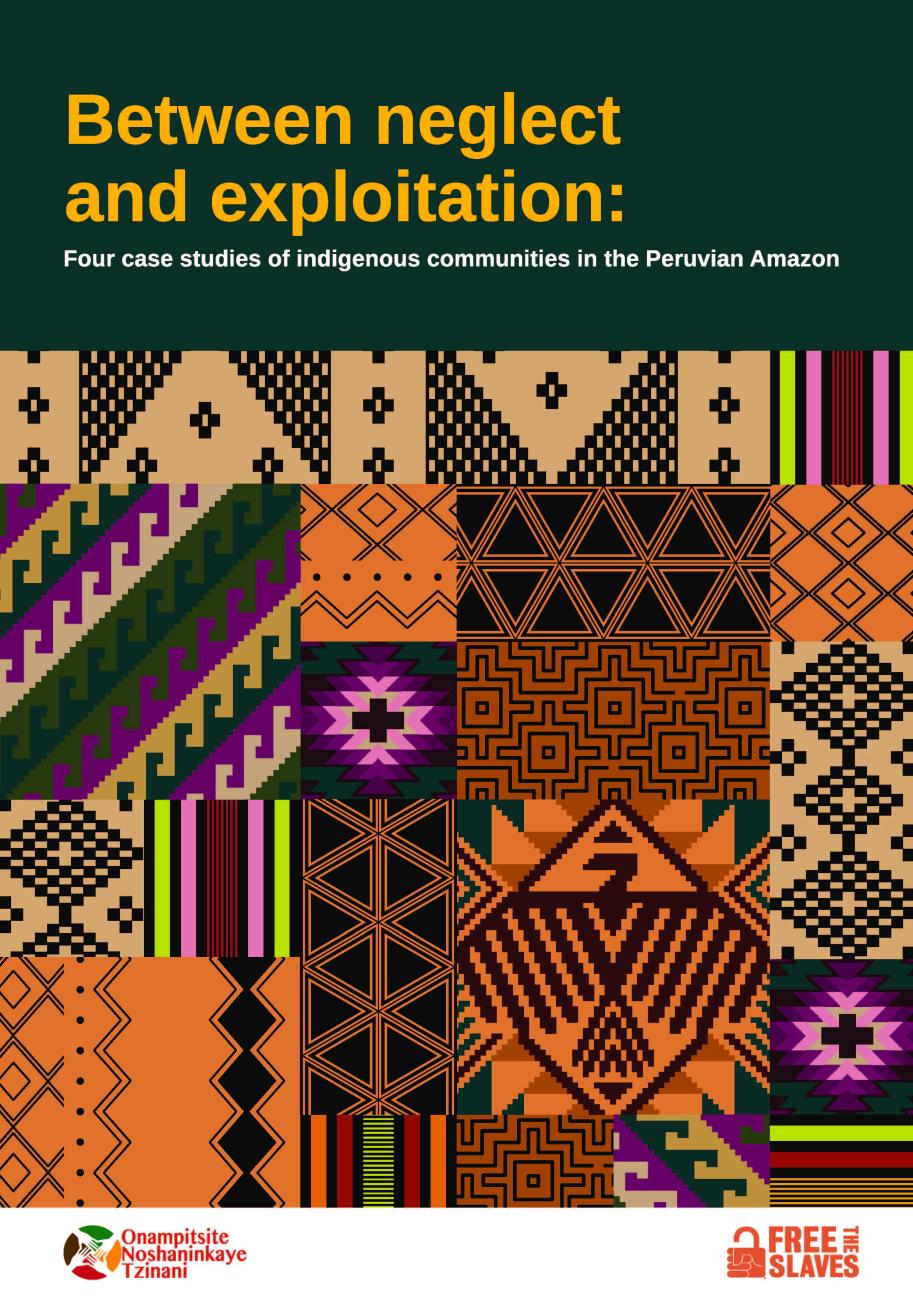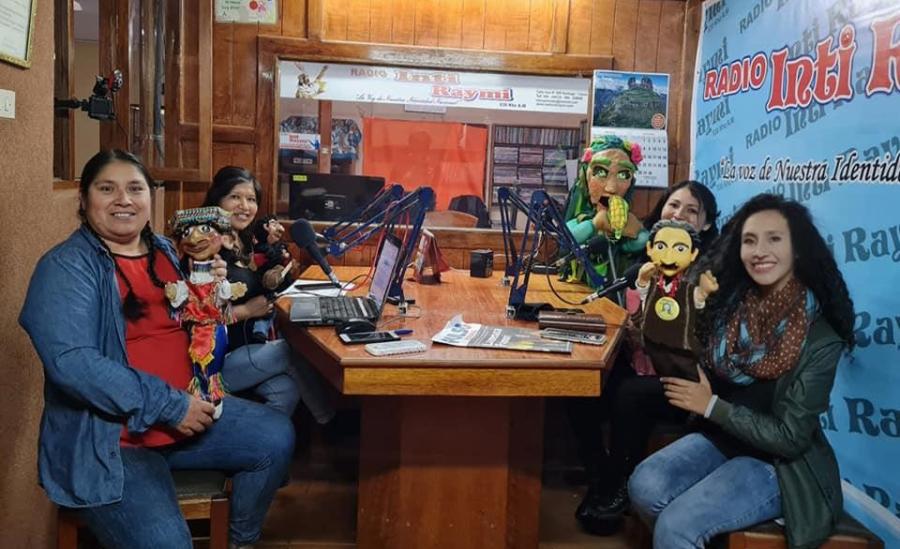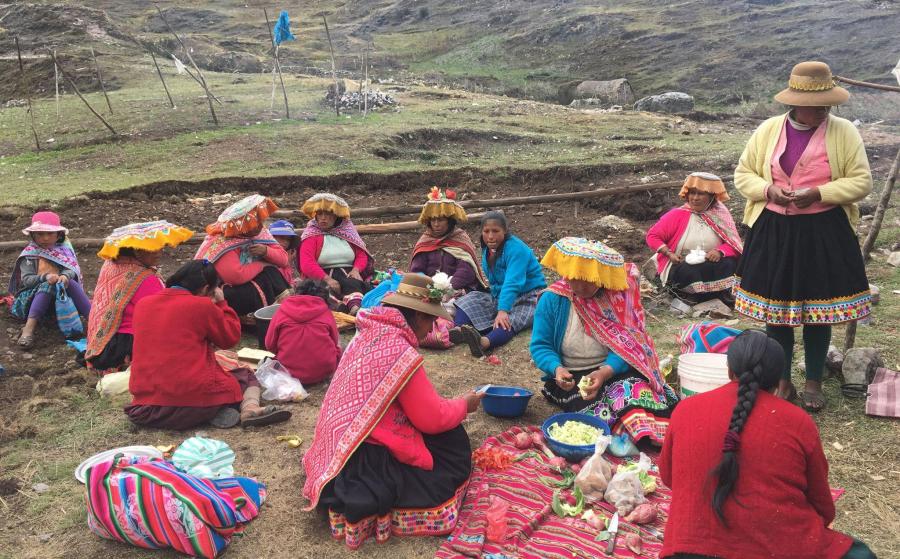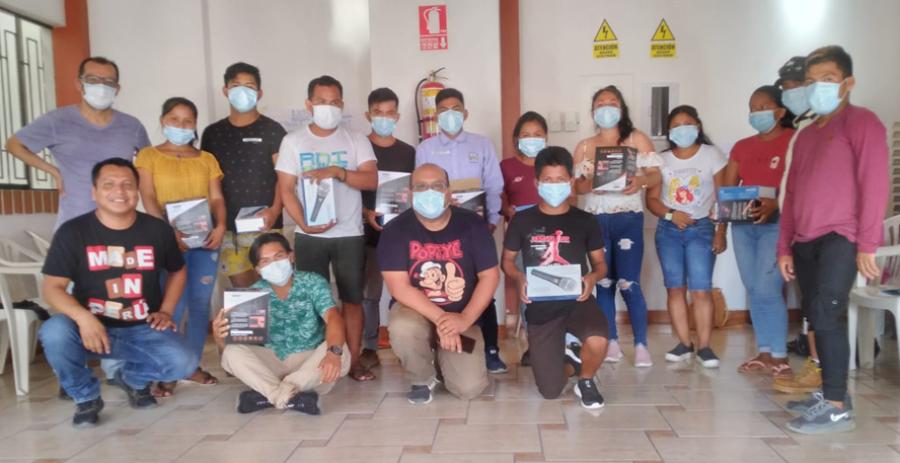
According to the International Labor Organization (ILO), the International Organization for Migration (IOM), and Walk Free, 49.6 million people worldwide are trapped into various forms of modern slavery, including 27.6 million in forced labor and 22 million in forced marriages. Factors such as poverty, COVID-19, the climate crisis, armed conflicts, and forced displacements are among the most prominent causes for these staggering figures.
In Peru, slavery has a long history, with numerous groups (such as Indigenous Peoples, African people, and individuals of Chinese descent) systematically subjected to trafficking, exploitation, and enslavement. Today, despite the efforts made by the government to combat the phenomenon, modern slavery continues to be prevalent throughout the country.
Driven by these considerations, the organizations Free the Slaves, an international NGO working to end the conditions that contribute to modern slavery, and Onampitsite Noshaninkaye Tzinani (ONOTZI), a Peruvian NGO working to promote the well being and development of Indigenous communities, conducted a research project to better illuminate the reality of modern slavery among Peru’s Indigenous communities. Following extensive fieldwork among four Indigenous communities in the Peruvian Amazon’s regions of Ucayali and Huánuco, the report found that Indigenous people are becoming increasingly vulnerable to modern slavery due to a series of multidimensional, interconnected vulnerabilities.
The Road to Exploitation and Slavery
Over the years, illegal activities of mining and logging have dramatically increased throughout Peru, where they are facilitated by the state’s failure to adequately regulate and monitor the extractivist industry. As Indigenous communities live in the territories that display the highest abundance of natural resources, their paths have inevitably crossed with those of illegal extractivist companies. To make things work, Indigenous territories lack clear demarcation, which contributes to the overlap between extractive concessions and the Indigenous lands. In this situation of widespread exploitation, Indigenous community leaders who attempt to oppose resource extraction and advocate for the protection of their ancestral territories face threats and assassinations.
Unregulated and unmonitored by the state, illegal logging has been contributing in devastating ways to deforestation in the Amazon (from 2001 to 2019, the country lost 2,433,314 hectares of Amazon forests to deforestation). For its part, illegal mining has been contributing to the contamination of water sources through the use and release of the mercury used to separate gold from rock fragments. Mercury is a highly toxic mineral that can spread over vast territories and generate severe health consequences even among persons living thousands of kilometers from mining areas.
As a result of these illegal extractivist activities that destroy the surrounding environment, exacerbate the effects of climate change, and contribute to the degradation of the existing ecosystem, Indigenous people have found themselves progressively deprived of their traditional livelihoods. As they lose their means of sustenance, they become more easily prey to ruthless traffickers, eager to exploit them for their own material profit.
These dynamics, however, do not occur in a vacuum. Rather, they are nurtured by pre-existing vulnerabilities that have traditionally affected Indigenous people in Peru:
- Economic Need. Due to a precarious local economy, structural discrimination against Indigenous communities in the labor market, and traditional state neglect, poverty is chronic among Indigenous people. The residents of all four communities where the research was conducted range from being poor to extremely poor. This ultimately forces many people (especially among youngsters) to accept jobs in informal and unregulated sectors, where the likelihood of exploitation is high. Another means to which residents have sometimes resorted to break the cycle of poverty is the sale or rent of land to illegal miners. The lack of alternative job opportunities also drives youth into hazardous extractivist industries, which falsely promise a decent living. Due to the widespread poverty, finally, many children are forced by their families to take part in agricultural work and contribute to the family’s financial survival.
- Limited Education: The existing school system is highly inadequate in Indigenous areas, as it fails to guarantee access to bilingual intercultural education. As a result, Indigenous children are excluded from the opportunities that a good education opens to their counterparts in non-Indigenous territories later in life. Commonly, students do not advance onto secondary education, with discrimination being a primary factor identified as inhibiting children and adolescents to pursue further education in bigger towns or cities. Work responsibilities of children from poor households also contribute to higher rates of early school dropout.
- Gender-based Violence: The widespread occurrence of gender-based violence couples with economic insecurity to create an environment conducive to early and forced marriages, which have become normalized among local households. Forced marriages at a young age have also become increasingly accepted in a context in which childhood is brief and children engaged in labor are pressured into getting married and having children since the age of 12 or 13.
- Healthcare: Indigenous communities are forced to deal with a lack of medicine and the state’s failure to provide medical services that are regular, adequate, and tailored to various populations (language, culture, distances).
- Geographical remoteness. The communities’ remote location represents an obstacle to their opportunities for development. Moreover, their remote location limits the communities’ capacity to access legal mechanisms, justice, and victim’s protection services, leaving them more vulnerable to modern slavery and less likely to find ways to exit exploitation.
- State Neglect: The lack of governmental support and oversight has created a reality where Indigenous communities are de facto abandoned to themselves, with no support and protection from the central authorities.
Favored by the intersection of these multidimensional vulnerabilities, diverse modalities of modern slavery were identified in the Indigenous communities studied: the commercial sexual exploitation of children, labor exploitation of children in coca leaf cultivation, and forced child marriage. Indicators of trafficking for sexual exploitation and for forced labor were also identified among adults in illegal mining, logging, and drug trafficking.
Recommendations
The report calls on the Peruvian government and civil society stakeholders, among others, to implement various recommendations relating to prevention, protection, prosecution, and partnerships. Some of the recommendations include:
Prevention:
- Ensure that Indigenous communities have equal access to essential public services.
- Implement policies that promote climate change resilience through environmental protection and regulations on environmentally degrading industries.
- Implement culturally appropriate programs preventing human trafficking and modern slavery in Indigenous communities.
Protection:
- Address gender-based violence, especially child marriage and the commercial sexual exploitation of children, in indigenous communities of the Amazon through a comprehensive approach.
- Rescue, rehabilitate, and reintegrate trafficked persons living in sites where exploitation is prevalent.
- Guarantee human rights for environmental defenders and indigenous communities at-risk of violence.
Prosecution:
- Establish mechanisms in indigenous communities to report and register human trafficking and modern slavery cases.
- Strengthen the rule of law and human rights accountability through investigations and prosecutions of corruption cases related to human trafficking and other forms of exploitation.
Partnerships:
- Conduct studies and establish data collection systems to capture the diverse forms of exploitation affecting indigenous persons in rural and urban areas.
- Guarantee indigenous communities’ participation in national and regional coordination efforts against human trafficking, modern slavery, and gender-based violence.
Links to the full report (English) (Español) (Ashaninka)
Links to the Executive Summary (English) (Español) (Ashaninka)



